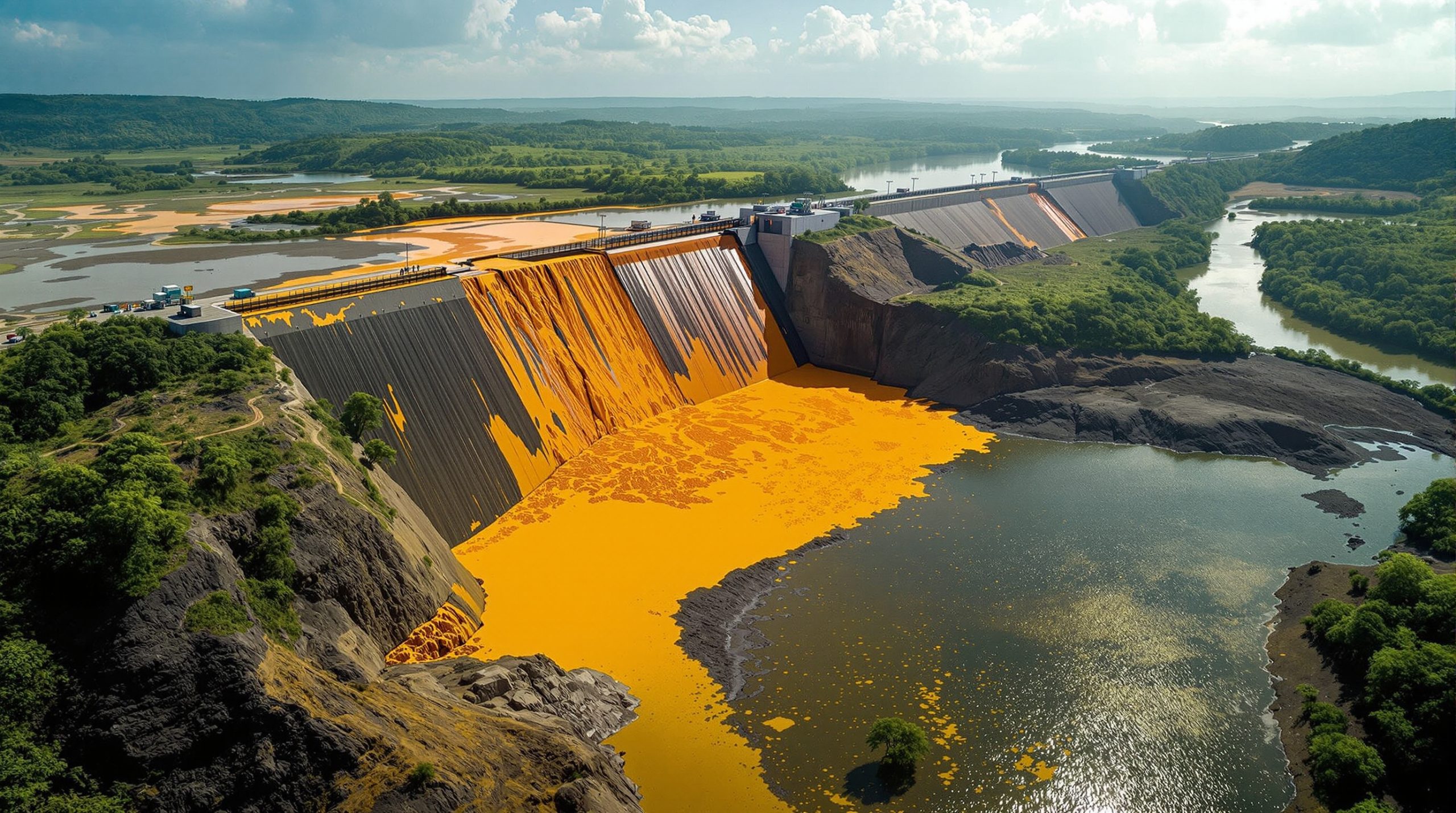Understanding Australia's Mining Industry Significance
Australia's mining sector stands as a cornerstone of the national economy, with profound impacts on employment, exports, and overall economic growth. The industry's significance extends beyond raw numbers to shape Australia's global position and domestic prosperity.
Key Statistics & Data:
- Economic Contribution: Mining generates approximately 15% of Australia's GDP, positioning it as one of the country's most vital industries.
- Employment Impact: The sector creates over 1.1 million direct and indirect jobs across the country, supporting communities from remote regions to metropolitan centers.
- Resource Scale: Australia operates more than 350 mines nationwide, ranging from massive open-cut operations to specialized underground facilities.
- Global Position: Australia holds the distinction of being the world's largest mining market, dominating global production of iron ore (37% of global supply), lithium (55%), and maintaining significant positions in gold (8%) and coal exports.
The mining sector's influence reaches far beyond its direct operations, creating extensive supply chains and supporting auxiliary industries. Each mining job typically supports 4-5 additional positions throughout the economy, amplifying the industry's importance to Australia's prosperity.
"The mining industry is Australia's economic engine, driving regional development and export revenue while supporting hundreds of thousands of families across the continent." – Tania Constable, CEO of Minerals Council of Australia
Mining contributed AUD $467 billion in export earnings in 2023–24, with iron ore (53%), coal (18%), and gold (8%) leading the way. This export strength provides crucial support for Australia's balance of trade and currency stability.
Regional Powerhouses
Western Australia's Pilbara region exemplifies the sector's economic might, with iron ore operations producing over 800 million tonnes annually and supporting 45,000 regional jobs. Similarly, Queensland's coal industry contributed $64 billion to the state economy in 2023, highlighting the sector's role in regional development.
Beyond these traditional powerhouses, emerging critical minerals energy transition projects in South Australia, Victoria, and the Northern Territory are positioning Australia at the forefront of the global energy transition, with lithium, cobalt, and rare earth elements becoming increasingly vital to global supply chains.
What Challenges Threaten Mining Sector Resilience?
Despite its economic strength, Australia's mining sector faces unprecedented challenges that threaten operational continuity and long-term viability. These risks require sophisticated strategies and forward-thinking approaches to maintain the industry's resilience.
Climate and Environmental Pressures
The Australian mining sector confronts escalating climate-related threats that demand immediate attention and strategic responses:
Severe Weather Events: The frequency and intensity of cyclones, floods, and drought conditions have increased dramatically, with data from the Bureau of Meteorology showing a 40% rise in extreme weather events over the past two decades.
Climate Risk Ranking: Australia ranks 87th globally for climate risk exposure according to the 2025 FM Resilience Index, highlighting significant vulnerabilities despite the country's overall economic strength.
Regional Vulnerabilities: Mining operations face location-specific threats, with 80% of Western Australia's mines situated in cyclone-prone areas, while Queensland operations contend with flood risks three times the national average.
"Cyclone disruptions cost Australian miners AUD $1.2 billion annually in lost production, a figure expected to increase as climate patterns intensify." – Dr. Karl Braganza, Head of Climate Services, Bureau of Meteorology
Carbon Reduction Demands: The mining sector accounts for 26% of Australia's Scope 1 emissions, creating regulatory and market pressures for rapid decarbonization. Companies face challenging timelines to reduce emissions while maintaining production levels and profitability.
The physical impacts of climate change manifest in concrete operational challenges: reduced water availability for processing, extreme heat affecting equipment and worker productivity, and infrastructure damage from intensifying weather events. These factors create complex risk landscapes requiring sophisticated management approaches.
Geopolitical and Operational Risks
Beyond environmental challenges, mining operations face an increasingly complex web of geopolitical and operational risks:
Supply Chain Vulnerabilities: The COVID-19 pandemic exposed critical weaknesses in global supply chains, with 75% of Australian mining companies reporting significant disruptions to equipment, parts, and consumables.
International Operations: Australian mining companies with overseas assets face heightened sovereign risk, as evidenced by recent nationalizations in Latin America and regulatory changes in Africa affecting property rights and operational certainty.
Market Volatility: Commodity price fluctuations have intensified, with iron ore prices swinging from $200/tonne to $100/tonne within 12-month periods, complicating capital investment decisions and financial planning.
Operational Continuity: Labor shortages plague the industry, with data showing 21,000 unfilled mining technology roles in Western Australia alone, creating operational bottlenecks and limiting production capacity.
Adding further complexity, 78% of Australia's critical minerals exports face trade concentration risk, with China accounting for 70% of global lithium processing capacity. This geopolitical exposure creates strategic vulnerabilities for the sector as trade tensions persist.
How Do Resilience Metrics Evaluate Mining Operations?
Understanding and quantifying resilience has become essential for mining companies seeking to navigate complex risk landscapes. Sophisticated evaluation frameworks now provide actionable insights for operational and strategic decisions.
FM Resilience Index Framework: This annual assessment ranks 130 countries and territories based on comprehensive risk factors, providing mining companies with comparative data to evaluate operational environments. The methodology combines granular physical risk assessment with macro-level economic and political stability measures.
18 Resilience Factors: The framework evaluates operations across interconnected categories including:
- Physical risk factors (fire exposure, water stress, infrastructure quality)
- Political stability metrics (governance, regulatory quality, corruption levels)
- Supply chain resilience indicators (logistics quality, transportation alternatives)
- Economic factors (inflation volatility, financial system strength)
Australia's Overall Ranking: Australia's 13th place globally for overall resilience represents a strong position, though the country's 87th ranking for climate risk exposure reveals a significant vulnerability for mining operations specifically.
"The Index transforms vague risks into actionable data for site selection and operational planning. Mining companies can now quantify previously intangible threats." – Andrew Stafford, FM Senior Vice President and Operations Manager
Data Sources: The framework incorporates information from trusted international organizations including the IMF and World Bank, supplemented by FM's proprietary risk assessments based on decades of loss data and environmental modeling.
The practical application of these metrics allows mining companies to make data-driven decisions about:
- New project viability based on location-specific risk profiles
- Insurance requirements and risk transfer strategies
- Capital allocation for resilience-building infrastructure
- Operational scheduling to mitigate seasonal threats
Comparative Advantage Through Metrics
Mining companies increasingly use resilience metrics as competitive differentiators. Newmont Corporation, for instance, applies the FM Resilience Index when evaluating acquisition targets, assigning a 15% valuation premium for assets in countries ranking in the top quartile for resilience.
Similarly, South32 incorporates climate vulnerability scores when acquiring copper assets in Peru, using the data to determine appropriate contingency budgets and operational reserves. This metrics-driven approach transforms abstract risks into quantifiable factors for financial modeling and strategic planning.
What Strategies Build Mining Sector Resilience?
Building resilience requires comprehensive approaches that span planning, operations, and strategic decision-making. Forward-thinking mining companies are implementing multi-layered strategies to strengthen their positions against emerging threats.
Risk Assessment and Planning
Effective resilience begins with sophisticated risk evaluation and strategic planning:
Holistic Risk Evaluation: Leading companies now employ integrated risk frameworks that analyze environmental, locational, and geopolitical factors simultaneously. These approaches recognize the interconnected nature of modern risks, where climate impacts can trigger supply chain disruptions and political instability.
Vulnerability Identification: Advanced modeling techniques, including digital twins of mining operations, allow companies to pinpoint specific operational weaknesses under various stress scenarios. These models simulate extreme weather events, supply chain disruptions, and price shocks to identify critical vulnerabilities.
Strategic Site Selection: Resilience data increasingly influences expansion and new project planning, with 68% of major mining companies now incorporating climate risk scoring into investment decisions. This approach shifts investment in Australian mining away from high-risk regions despite potentially attractive resource quality.
Long-term Sustainability Planning: Forward-looking operators develop strategies aligned with changing conditions, including:
- Water management plans accounting for increased scarcity (70% of new projects)
- Energy transition roadmaps with defined decarbonization pathways (85% of ASX-listed miners)
- Community engagement strategies addressing changing social expectations (90% of major operators)
These planning approaches transform resilience from a reactive emergency response function to a proactive strategic capability integrated into core business planning.
Operational Adaptations
Converting planning into operational reality requires concrete adaptations across mining operations:
Supply Chain Strengthening: Diversifying suppliers and logistics options creates redundancy against disruption. Leading practices include:
- Maintaining 30-60 day critical parts inventories on-site
- Qualifying multiple suppliers for critical components
- Developing alternative logistics routes for both inputs and outputs
- Creating regional supply hubs to reduce dependency on global shipping
Seasonal Risk Management: Implementing targeted loss prevention during high-risk periods, such as cyclone season in northern Australia, includes:
- Adjusted maintenance schedules to ensure equipment readiness
- Pre-positioned emergency response resources
- Staff training for rapid recovery operations
- Production scheduling that builds inventory buffers before high-risk seasons
Infrastructure Reinforcement: Hardening facilities against extreme weather events involves significant capital investment but delivers long-term resilience benefits:
- Upgraded drainage systems designed for 1-in-100-year flood events
- Wind-resistant structures certified to withstand Category 5 cyclones
- Elevated critical infrastructure above flood levels
- Redundant power systems with on-site generation capability
Operational Flexibility: Creating adaptable systems allows rapid response to changing conditions:
- Modular processing plants that can scale production
- Cross-trained workforce capable of redeployment
- Flexible work arrangements during extreme weather
- Remote operations capabilities reducing on-site personnel requirements
These operational adaptations represent significant investments but deliver measurable resilience improvements and operational continuity during disruptions.
How Can Mining Companies Leverage Resilience Tools?
Beyond frameworks and strategies, mining companies have access to specialized tools that enhance resilience capabilities and provide practical implementation support.
Natural Hazard Toolkit: This resource suite provides assessment and preparation capabilities for environmental threats:
- Flood mapping overlays for mine site planning
- Cyclone tracking with operational impact modeling
- Drought forecasting for water management planning
- Bushfire risk assessment for infrastructure protection
Risk Exposure Measurement: Quantification tools help companies understand their vulnerability profiles:
- Supply chain mapping with disruption modeling
- Critical infrastructure dependency analysis
- Financial stress testing under multiple risk scenarios
- Carbon transition risk assessment
Resilience Index Application: Companies can apply global rankings to inform strategic decisions:
- Country risk profiles for investment screening
- Regional comparisons for expansion planning
- Temporal analysis showing changing risk patterns
- Benchmark comparisons against industry peers
Framework Implementation: Structured approaches to resilience building include:
- Resilience maturity models for organizational assessment
- Implementation roadmaps with phased deployment
- Performance metrics for tracking resilience improvements
- Governance structures for ongoing resilience management
These tools transform abstract resilience concepts into practical capabilities that mining companies can implement throughout their operations. Industry leaders are increasingly integrating these resources into standard operating procedures rather than treating them as separate risk management functions.
Case Study: Implementing Resilience Tools
A major iron ore producer in Western Australia's Pilbara region applied the Natural Hazard Toolkit to transform its cyclone response planning. The company combined historical weather data with infrastructure vulnerability assessments to develop a dynamic response model that:
- Predicted operational impacts 72 hours before cyclone landfall
- Optimized pre-cyclone production to build shipping buffers
- Staged equipment shutdown sequences to minimize recovery time
- Positioned recovery teams strategically based on impact modeling
This approach reduced post-cyclone recovery time by 40% and decreased annual production losses by approximately $45 million.
What Benefits Result From Improved Mining Resilience?
The investments required for enhanced resilience deliver substantial returns across multiple dimensions of mining operations, creating compelling business cases beyond mere risk reduction.
Operational Continuity: Maintaining production during adverse conditions delivers immediate financial benefits:
- 15-20% reduction in weather-related downtime
- 30% decrease in supply chain disruption impacts
- 25% improvement in recovery time after major events
- Consistent production supporting contract fulfillment and customer relationships
Long-term Profitability: Risk mitigation protects financial performance through multiple mechanisms:
- Reduced insurance premiums (8-12% savings for highly resilient operations)
- Lower capital replacement costs due to protected infrastructure
- Decreased emergency response expenditures
- Avoidance of contractual penalties for delivery failures
Sustainability Alignment: Meeting ESG expectations while maintaining operations creates market advantages:
- Enhanced access to green finance opportunities
- Improved ratings from ESG-focused investors
- Stronger community and regulatory relationships
- Competitive advantage in talent acquisition
Competitive Advantage: Positioning Australian mining as a stable global supplier strengthens market position:
- Price premiums for reliable supply (2-5% for critical minerals)
- Preferred supplier status with major customers
- Stronger negotiating position in offtake agreements
- Enhanced capacity for long-term contracts
These benefits create a compelling business case for resilience investments, transforming what might otherwise be viewed as compliance costs into strategic advantages with measurable returns.
Resilience Return on Investment
Financial analysis demonstrates the compelling economics of resilience investments. A typical mining operation investing $10 million in comprehensive resilience measures can expect:
- $2-3 million annual savings in avoided disruption costs
- $1-1.5 million reduction in insurance premiums
- $1 million in energy efficiency improvements from modernized infrastructure
- $500,000-$1 million in avoided regulatory penalties
These direct financial returns, combined with less quantifiable benefits like improved stakeholder relationships and enhanced reputation, typically deliver 3-5 year payback periods for major resilience investments.
FAQ: Mining Sector Resilience
What makes Australia's mining sector particularly vulnerable to climate risks?
Australia's mining operations face unique climate vulnerabilities due to their geographic distribution across climate-sensitive regions. The Pilbara's iron ore industry operates in cyclone-prone areas, while Queensland's coal mines contend with flood risks. Additionally, many operations depend on water-intensive processes in regions experiencing increasing water stress.
The country's extensive supply chains, often stretching thousands of kilometers from mine to port, create multiple points of climate vulnerability. A single railway washout can halt exports from an entire mining region, as demonstrated when flooding in 2022 cut the Central Queensland Coal Network for three weeks, costing operators over $800 million in lost production.
Moreover, Australia's position in global markets creates additional exposure, as climate events affecting competitors can drive price volatility and market disruption, requiring rapid operational adjustments to capitalize on opportunities or mitigate losses.
How can mining companies balance resilience investments with profitability goals?
Forward-thinking companies view resilience as a strategic investment rather than a cost center, recognizing three key financial principles:
-
Risk-Adjusted Return Analysis: Evaluating projects based on their resilience-adjusted returns rather than base-case profitability alone. This approach typically values projects in stable jurisdictions 10-15% higher than those with equivalent resources but higher risk profiles.
-
Opportunity Cost Calculation: Quantifying the financial impact of disruptions and incorporating these costs into investment decisions. Studies show that mining companies lose an average of 3-5% of annual production to preventable disruptions, creating a clear financial case for resilience measures.
-
Phased Implementation: Developing staged resilience roadmaps that prioritize high-return interventions while spreading capital requirements over multiple budget cycles. This approach typically begins with operational measures before progressing to infrastructure hardening.
The most sophisticated operators incorporate resilience metrics directly into executive compensation structures, aligning leadership incentives with long-term operational stability rather than focusing exclusively on short-term production targets.
What role does technology play in building mining sector resilience?
Technology serves as a critical enabler of mining resilience through multiple pathways:
Advanced Monitoring Systems: Sensor networks and satellite monitoring provide early warning of developing threats:
- Vibration sensors detect equipment failures before catastrophic breakdowns
- Automated weather stations provide localized climate data for operational decisions
- Satellite monitoring tracks environmental changes affecting water supplies and infrastructure
- Ground movement sensors identify geotechnical instabilities before failures occur
Predictive Analytics: AI transforming mining operations transforms monitoring data into actionable insights:
- Weather pattern analysis predicts extreme events with site-specific impacts
- Equipment performance modeling identifies maintenance needs before failures
- Supply chain vulnerability analysis highlights potential disruption points
- Market modeling anticipates price movements and demand shifts
Automation Technologies: Reducing human exposure during adverse conditions:
- Autonomous haulage systems maintain production during extreme heat
- Remote operations centers allow continuous monitoring from safe locations
- Automated processing plants operate with minimal on-site staffing
- Drone-based inspection capabilities assess damage without personnel exposure
Digital Twins: Virtual replicas of physical operations enable scenario planning:
- Testing operational responses to extreme weather
- Modeling infrastructure modifications before physical implementation
- Training staff in emergency procedures without operational disruption
- Optimizing recovery sequences after disruptive events
These technologies transform resilience from reactive emergency response to proactive risk management with continuous improvement capabilities.
How are international mining investments affected by resilience considerations?
Companies increasingly incorporate resilience metrics into investment decisions, creating new dynamics in international [mining industry evolution](https://discoveryalert.com.au/news/
Ready to Spot Major Mineral Discoveries Before the Market?
Discovery Alert's proprietary Discovery IQ model instantly identifies significant ASX mineral discoveries, providing actionable investment insights that could lead to substantial returns. Visit our discoveries page to understand why early discovery identification matters and begin your 30-day free trial today to gain a crucial market advantage.




